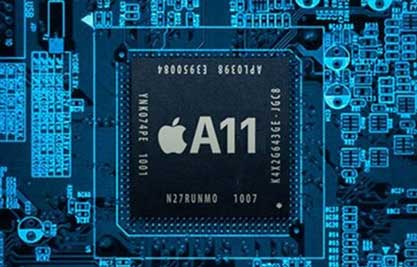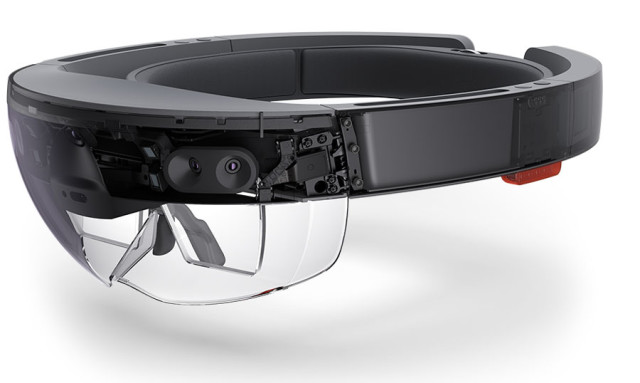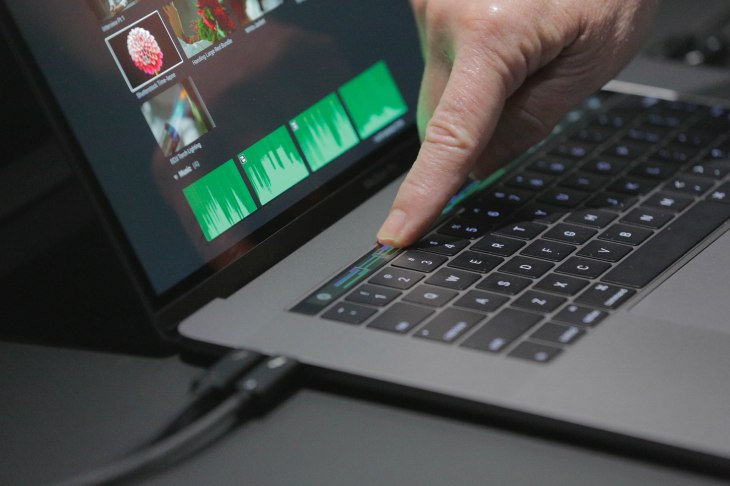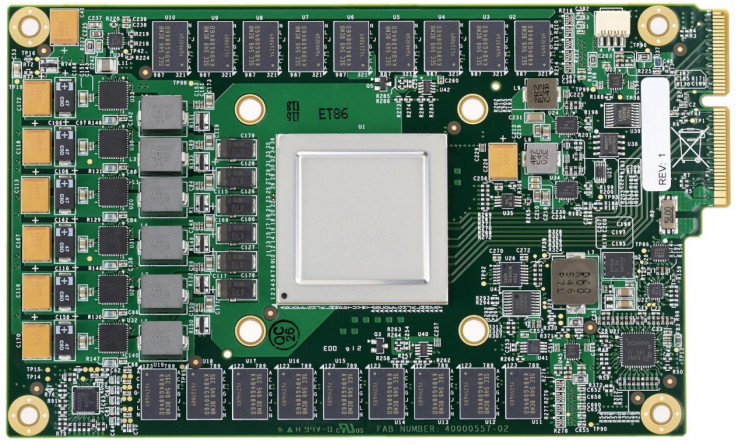21
Introduction
At present, global network service giants such as Google, Microsoft, Facebook, and Amazon begin to enter the independent research and development of chipset solutions, and invest heavily. In 2017, Amazon spent $22.6 billion on research and development, up 41% from 2016, and quite a few of it was used to design customized artificial intelligence chips. Alphabet, Intel, Microsoft and Apple also followed closely. Facebook's R&D spending rose from 13th in 2016 to 9th in 2017, and the company increased its R&D spending by 32% to $7.8 billion. Internet giants tried to research their own chips, and took artificial intelligence chips as priority. They planned to reduce the dependence on NVIDIA, Qualcomm, Intel and other chip manufacturers to meet the special needs of their different devices for chip performance, and improve user stickiness.

Figure 1. AI chips
What have they done on chip self-development?
Google officially released the Pixel mobile phone in 2016, which has been well received by the industry. The Pixel 3 series is also planned to be launched this year. But unlike before, Google's Pixel 3 will use the self-developed processor directly. In 2017, Google hired Manu Gulati, one of the main leaders in the development of Apple's A-series processors, to show the industry that it was building a hardware design team for mobile phone processor chips. Experts told reporters that in order to enhance the image recognition speed of Pixel mobile phones, Google would focus on developing their own chips. According to the reports, Google wants to improve its image processing speed because the speed of Apple's mobile phone processor chip has reached 7 times that of Google.

Figure 2. Google's Pixel 3
Apple plans to use the self-developed processor chips to replace those of traditional manufacturers from 2020. Experts said that Apple had always pursued a closed ecology though there were too many branches to complete all the production steps. After obtaining the ARM architecture license, Apple began to design its own chip. The first product was used for the iPhone 5S, its 64-bit A7 chip used a quad-core graphics processor. As to the Apple A11 chip, its image processing speed was accelerated. The high-performance core makes it 25% faster than the previous generation. Experts explained to reporters that the biggest advantage of Apple's self-developed processor was the adapter model. No matter how high the performance of Apple's designed processor is, there are matching Apple models. In contrast, it’s not easy for Qualcomm's processor to find the right Android phone.

Figure 3. Apple' A11 chip
In addition to Google and Apple, Microsoft also has the trend to develop their own processor chip. In March 2018, it was the recruitment rush of big companies. At that time, Microsoft listed the demand for AI processor talents. That might be Microsoft's response to the slogan of 2017. In 2017, it announced that it would launch a new generation of processing units to provide processing chips for its augmented-reality glasses. Microsoft positioned this product for artificial intelligence (AI) workloads and took it as the touchstone for its involvement in the AI field.

Figure 4. augmented-reality glasses
Get rid of dependence mode and improve user stickiness
The cost of independently developing processor chips is not low. Why are big manufacturers entering the market? Experts said this was an important step to increase the autonomy of chip design and improve the user stickiness.
In terms of adaptability, Apple's self-developed chips, compared with traditional manufacturers, will be more suitable for Apple's end products; in terms of performance, Apple's self-developed chips have lower energy consumption and better compatibility. In terms of graphics output function, Apple is planning to join today's hot artificial intelligence and augmented reality technology, so the requirements for processor chips will be higher and higher. Apple always spent some on independent research and development, but it was still a lot less than that for "buying patents and products." Experts explained to reporters that developing their own chips could not only reduce the complexity of Apple's internal management, but also help the company reduce costs and accelerate the company's operation. Therefore, the chip self-development is an important part for its future development.

Figure 5. Apple could be working on ARM-based Mac chips to make Mac laptops more efficient
For Google, its self-developed chips, especially those with deep learning performance, help it chase AI market. The reporter found that the TPU, compared with CPU, GPU and FPGA, launched by Google was not very flexible, especially in deep learning. However, in terms of efficiency, Google's TPU is of a higher grade. It can achieve high efficiency for a specific AI optimization algorithm.
Experts told reporters that Google's TPU was a outdated technology which was great at that time, but the real purpose was thought-provoking. According to Google’s past trick of “sounding the West”, experts speculated that Google might has better technology or it was misleading others’ research directions on purpose. But what’s clear is Google’s ambition to enter the AI field. Besides,Google has a sufficient number of machines to support its own research and development of AI processors, which facilitates the "training" of chips. For example, Google's neural networks of cat face recognition is the use of tens of thousands of CPUs for seven days to complete the training.

Figure 6. Google's TPU
In recent years, Microsoft also strive to develop AI chips and pursue higher flexibility. It hopes to advance "face recognition” and “neural network technology" even if customized chips cost more money. Experts said that Microsoft definitely could redefine chips with its huge demands so as to obtain a bigger AI market for its self-developed controller.
You May Also Like:
Bipolar Junction Transistor|BJT Transistor Theory
MOSFET Gate Drive Circuit Guidelines - Hints & Tips
Simple Analog Circuit Examples for Electronic Engineers
Switched Mode Power Supply: SMPS Topologies & Formulas
Ordering & Quality
| Photo | Mfr. Part # | Company | Description | Package | Qty |
|
MC9RS08KB2CSC | Company:NXP | Remark:IC MCU 8BIT 2KB FLASH 8SOIC | Package:8-SOIC (0.154", 3.90mm Width) |
MC9RS08KB2CSC Datasheet |
In Stock:10913 Inquiry |
Inquiry |
|
MPC8544CVTALFA | Company:NXP / Freescale | Remark:IC MPU MPC85XX 667MHZ 783FCBGA | Package:BGA |
MPC8544CVTALFA Datasheet |
In Stock:69 Inquiry |
Inquiry |
|
70V34L20PFI8 | Company:IDT | Remark:SRAM 4K x 18 3.3V Dual-Port RAM | Package: |
70V34L20PFI8 Datasheet |
In Stock:95 Inquiry |
Inquiry |
|
ATTINY13A-SUR | Company:Microchip | Remark:IC MCU 8BIT 1KB FLASH 8SOIC | Package:08LSOIJ |
ATTINY13A-SUR Datasheet |
In Stock:7060 Inquiry |
Inquiry |
|
MCIMX6U7CVM08AC | Company:NXP / Freescale | Remark:IC MPU I.MX6DL 800MHZ 624MAPBGA | Package:624-LFBGA |
MCIMX6U7CVM08AC Datasheet |
In Stock:95 Inquiry |
Inquiry |
|
MAX14515EWA+T | Company:Maxim Integrated | Remark:IC LENS DVR SMALL LIQUID 8-WLP | Package:8-WFBGA, WLCSP |
MAX14515EWA+T Datasheet |
In Stock:9184 Inquiry |
Inquiry |
|
MMB02070C2201FB200 | Company:VISHAY | Remark:RES SMD 2.2K OHM 1% 1W 0207 | Package:SMD |
MMB02070C2201FB200 Datasheet |
In Stock:63360 Inquiry |
Inquiry |
|
Z8F042ASB020EG | Company:ZiLOG | Remark:IC MCU 8BIT 4KB FLASH 8SOIC | Package:8-SOIC (0.154", 3.90mm Width) |
Z8F042ASB020EG Datasheet |
In Stock:802 Inquiry |
Inquiry |
|
MC9S12XDG128MAA | Company:NXP | Remark:IC MCU 16BIT 128KB FLASH 80QFP | Package:80-QFP |
MC9S12XDG128MAA Datasheet |
In Stock:126 Inquiry |
Inquiry |
|
MMA2204KEGR2 | Company:Freescale Semiconductor - NXP | Remark:ACCELEROMETER 112.5G ANAL 16SOIC | Package:16-SOIC (0.295", 7.50mm Width) |
MMA2204KEGR2 Datasheet |
In Stock:1330 Inquiry |
Inquiry |